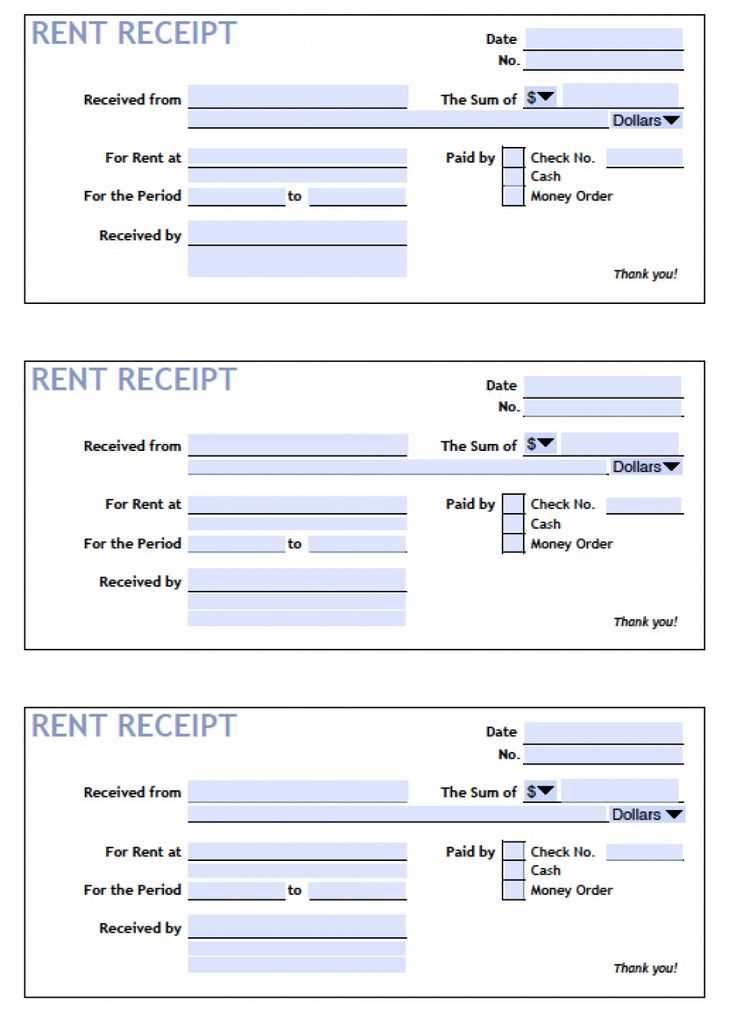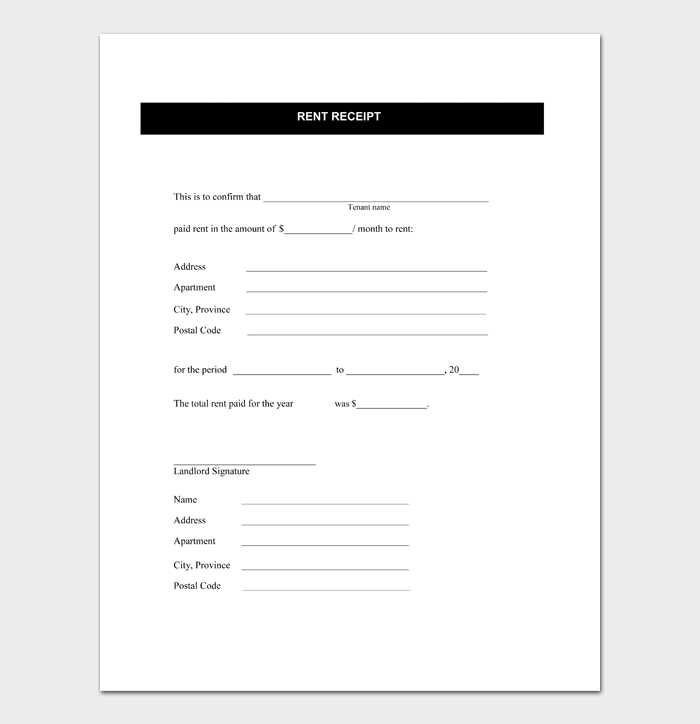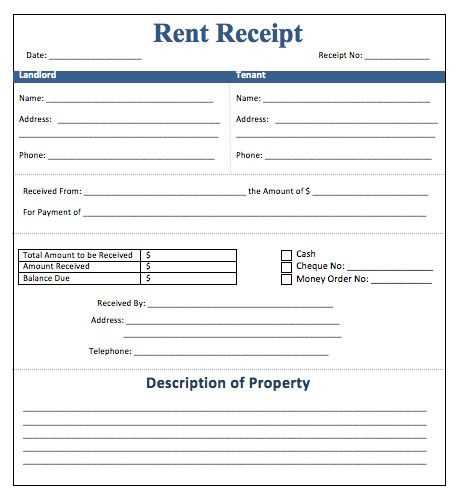
Creating a rent and utilities receipt template saves you time and ensures clear communication between landlords and tenants. Customize the template with essential details such as the tenant’s name, rental period, rent amount, utility charges, and any other relevant fees. Use a clean, straightforward format that clearly distinguishes rent from utilities to avoid confusion.
Including a section for the payment method and a receipt number helps keep transactions organized. These details also serve as useful records for both parties. Don’t forget to specify due dates and any late fees if applicable, providing transparency about payment expectations. A well-designed receipt reinforces professionalism and can prevent future disputes.
Ensure that the template is easy to edit for different tenants and rental agreements. Incorporating a space for the landlord’s signature or stamp adds an official touch, further enhancing the document’s legitimacy. For tenants, it’s always a good idea to save receipts as proof of payment for future reference or tax purposes.
Rent and Utilities Receipt Template
Use a simple and clear receipt template for documenting rent and utility payments. This ensures both parties have a reference for financial transactions. Each receipt should include specific details to avoid misunderstandings.
Key Elements of a Rent and Utilities Receipt
A well-organized receipt should include:
- Tenant’s name – The person making the payment.
- Landlord’s name – The property owner or management company.
- Property address – The location of the rental property.
- Amount paid – Clearly state the rent and utility amounts separately.
- Payment date – The exact date the payment was made.
- Payment method – Specify whether the payment was made via cash, check, or another method.
- Period covered – Include the time frame the payment covers (e.g., rent for February 2025, utilities for January 2025).
- Transaction reference number – For tracking purposes, especially if the payment was made electronically.
Sample Format

Here’s a basic template you can use:
Receipt for Rent and Utilities Payment
Tenant: [Tenant’s Name]
Landlord: [Landlord’s Name]
Property Address: [Full Address of the Property]
Amount Paid: [Rent Amount] (Rent), [Utility Amount] (Utilities)
Payment Date: [Date]
Payment Method: [Cash/Check/Bank Transfer]
Period Covered: [Month/Year]
Transaction Reference: [Reference Number]
Signature (if applicable): [Landlord/Tenant’s Signature]
With this clear template, both tenant and landlord will have a record of the transaction, simplifying any future disputes or clarifications.
How to Create a Clear Rent Receipt for Tenants
Include the tenant’s name, the property address, and the payment date at the top of the receipt. This information ensures clarity and identifies which rental payment is being acknowledged. Clearly state the amount paid and specify the payment method–whether it’s cash, check, or bank transfer. This eliminates confusion and verifies the transaction type.
Break Down the Payment

Detail any charges included in the payment, such as rent, utilities, or late fees. This transparency helps tenants understand exactly what they are being charged for, reducing the chance of misunderstandings. If applicable, list the rent period covered by the payment, such as “January 1–31, 2025.”
Provide a Receipt Number
Assign each receipt a unique number for easy reference and tracking. This makes it simpler for both the landlord and tenant to keep records organized. This number can be particularly helpful if a dispute arises regarding payment history.
Conclude the receipt with the landlord’s contact information, so tenants can reach out if they have any questions about the payment. This adds an extra layer of professionalism and accessibility.
Customizing a Utilities Payment Receipt for Multiple Services
To create a utilities payment receipt for multiple services, break down the receipt into clear sections that specify each service’s cost. Use separate lines or tables for each utility (electricity, water, gas, etc.), including service dates and amounts. This helps avoid confusion and makes tracking expenses easier.
Start with a Service Breakdown: List each utility separately, showing the type, amount due, and due date. You can group services by type (e.g., electricity, water) or keep them as individual line items for clarity.
Include Payment Information for Each Service: For each utility, mention the amount paid, the method of payment, and the date of payment. If a partial payment was made, include the remaining balance for each service separately.
Specify Total Amount: After listing individual services, show the total amount paid across all services. This ensures the customer can easily identify the total payment without needing to add up individual charges.
Utilize Clear Formatting: A clean layout is key to making the receipt easy to read. Ensure each section is well-spaced and clearly labeled. Consider using borders or shading for each service entry to distinguish between them.
Consider Adding a Payment Confirmation: For further customization, include a section that confirms the payment has been received for all services. A short statement such as “Payment successfully processed for all listed services” will provide assurance to the recipient.
Legal Considerations When Issuing Rent and Utility Receipts
Ensure each rent and utility receipt is clear, accurate, and legally compliant. The receipt should include details such as the full name of the payer, the payment date, and the amount paid. Keep these records in line with local tax laws, as they may be required for tax purposes or dispute resolution.
Payment Information
- Include the exact amount paid, broken down by rent and utilities if applicable.
- Clearly state the payment method (e.g., cash, bank transfer, check).
- Provide a reference number or transaction ID for easier tracking.
Addressing Legal Aspects

- Specify the rental period covered by the payment (e.g., January 1 to January 31).
- State any applicable taxes, fees, or penalties, especially if your jurisdiction requires them.
- Ensure that the landlord’s or utility provider’s contact information is included for communication purposes.
- Retain copies of all receipts in case of future disputes or audits.
Confirm that all information matches the terms set out in the rental or utility agreement. Incorrect or vague receipts could lead to legal challenges, especially when disputes arise over payments or agreements.


